phone (617) 324 3951
email sistiaga <at> mit.edu
Massachusetts Institute of Technology
E25-647, 45 Carleton Street
Cambridge, MA 02139
USA
Bio
2017-present –Marie Curie Fellow, MIT
2015-2017 –Postdoctoral Associate, MIT
2011-2015 – PhD, Universidad de La Laguna, Tenerife
2012-2013 – Visiting researcher, MIT
2007-2008 – MSc, Université Rennes 1, Rennes
2002-2007 – BA+MS, Universidad de La Laguna, Tenerife
Research
My research is at the intersection of organic geochemistry and paleolithic archaeology to investigate the role of meat and plant intake during human evolution. During my postdoc in MIT I will explore the use of fecal biomarkers as indicators of meat eating on early human sites (2Ma), integrating the results in a geochemical paleolandscape reconstruction. Additionally, I aim to apply molecular biomarkers of specific gut bacterial action to study the role of the microbiome on overcoming the challenges of diet, environment and lifestyle changes that took place during human history and prehistory.
Select Publications
-
Microbial biomarkers reveal a hydrothermally active landscape at Olduvai Gorge at the dawn of the Acheulean, 1.7 Ma.
- Brown, C. M., Henderson, D. M., Vinther, J., Fletcher, I., Sistiaga, A., Herrera, J., & Summons, R. E. (2017). An Exceptionally Preserved Three-Dimensional Armored Dinosaur Reveals Insights into Coloration and Cretaceous Predator-Prey Dynamics. Current Biology, 27(16), 2514-2521.
- Sistiaga, A., Wrangham, R., Rothman, J. M., & Summons, R. E. (2015). New Insights into the Evolution of the Human Diet from Faecal Biomarker Analysis in Wild Chimpanzee and Gorilla Faeces.PloS one, 10(6), e0128931.
- Sistiaga, A., Mallol, C., Galván, B., & Summons, R. E. (2014). The Neanderthal meal: a new perspective using faecal biomarkers.PloS one, 9(6), e101045.
- Sistiaga, A., Berna, F., Laursen, R., & Goldberg, P. (2014). Steroidal biomarker analysis of a 14,000 years old putative human coprolite from Paisley Cave, Oregon.Journal of Archaeological Science, 41, 813-817.
- Galvan, B., Hernández, C. M., Mallol, C., Mercier, N., Sistiaga, A., & Soler, V. (2014). New evidence of early Neanderthal disappearance in the Iberian Peninsula.Journal of human evolution, 75, 16-27.
- Mallol, C., Hernández, C. M., Cabanes, D., Machado, J., Sistiaga, A., Pérez, L., & Galván, B. (2013). Human actions performed on simple combustion structures: an experimental approach to the study of Middle Palaeolithic fire. Quaternary International,315, 3-15.



